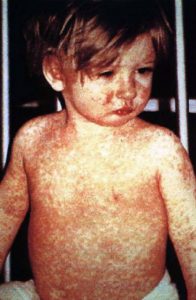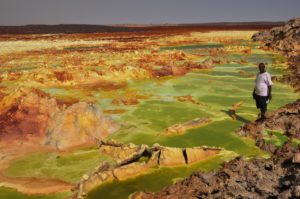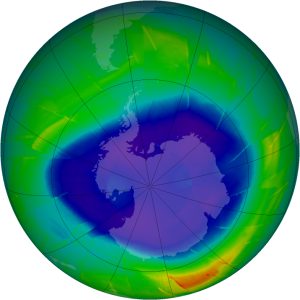As we all know, aging is a time-dependent deterioration process that occurs in most animals. It is manifested in weakness, susceptibility to disease, loss of mobility and flexibility, and a decline in fertility. Yet still today there is no scientific consensus to the factors of aging or a single theory that explains it. Following are some theories that try:
- Wear and Tear: This theory proposes that, similar to a vehicle, which over time malfunctions due to accidents or material fatigue, so does the living body. So the body’s systems and cells age over time due to injury and damage- bodily “wear and tear”. Biologically, the damage can result from the accumulation of toxins in the body that are a byproduct of the cellular respiration process. This toxin is called a free oxygen radical and it affects the cell, proteins, and hereditary material and changes their structure. To continue with our vehicle imagery, auto accidents in a biological system will actually be the accumulation of mutations. This does not necessarily mean mutations that cause cancer rather general mutations in the body. The advent of this theory led to the proliferation of antioxidant products.
Recently, a number of experiments have been conducted to strengthen this theory. For example, in one of the few cases in which researchers have been able to extend an organism’s life under laboratory conditions was when food consumption was limited. Laboratory rats, monkeys and flies, received about 30 percent less food than they normally ate. All these animals lived longer. It is assumed that limiting the food consumption causes the animal to produce less oxidizing substances and therefore it can live longer.
The theory of wear and tear does not always stand the test of reality. If we take a bat and a mouse and compare them, it seems that these two animals are very similar even though a bat flies and the mouse does not. Aviation is a process that requires a lot of energy and can lead to increased creation of oxidizing factors that cause greater damage. Nevertheless, the bat lives 25 times longer than the mouse. The queen of the ants is a machinelike individual in its propensity to produce eggs. The queen invests enormous energy in producing the eggs, but still lives six times longer than other ants in her nest.
Therefore, there are less widely accepted theories that believe that aging is completely planned.
2. Shortening of telomeres: The telomeres are DNA fragments located at the ends of the chromosomes, the bodies in our cells that contain our DNA, which are thought to protect the DNA’s edges. Due to the doubling processes of DNA, the sequence may be shortened and the telomeres serve as a protective layer of DNA. The more the cell divides, the more it loses telomeres and that damages the integrity of the genetic sequence. Then a broken DNA can be created that damages the cell and kills it.

According to this theory, dead cells damage the body and the accumulation of this type of damage is what causes aging. The difficulty in adopting this aging theory is that there are cells in the body where telomeres are not shortened at all. The telomere is a “timer” for the end of life, but telomeres are not shortened in all the cells (for example, cancer cells and stem cells), and there are animals, such as lobsters, where this phenomenon of telomere shortening does not exist.
Because the life expectancy of these animals is particularly long, hundreds of years, scientists assume theoretically that without the external threat of disease or hunting, the lobster and his friends can live forever. Other such animals, including turtles, crocodiles and spiders, improve their body defenses with age and remain fertile until the day they die.
3. The preconceived aging theory: There are animals for whom death happens instantly, almost pre-planned. Like a suicide. Salmon fish, for example, after swimming against the current to lay eggs are in peak shape! But within a week of this event the fish show signs of aging and just crumble … really crumble. Octopus reproduce once. After the mother gives birth, she stops eating and dies. Scientists have discovered a surgical procedure that can be performed on this octopus (removal of the eye) after which it continues to eat and can even reproduce again. Is our day of death programmed in our genetic code? Can it be changed surgically? Another experiment was conducted on Nemtode worms. Using genetic engineering, scientists removed several genes from the C. elegans worm. This removal extended the worm’s life six-times over! But there is still no real understanding of this life-prolonging mechanism.
4. Pleiotropic effect: This theory proposes that in the mechanism of natural selection, the living creature is in constant competition for its survival. It is competing for resources and space. Any genetic advantage the organism can achieve for itself will increase its chances of survival as introduced in the theory of evolution. The theory holds that due to the competition we prefer genes that are advantageous at an early age. We therefore accumulate many genes that give us an advantage at an early age, but are disadvantageous at a later age. This deficiency is expressed as a boom at a young age. But when you reach old age, the gene that gave the benefit at an early age becomes a burden.
The change in the age of death has led to the spread of new diseases. Since 1985, the number of diabetics around the world has nearly doubled. In 2000, the number rose to 180 million and now stands at 250 million. About 6% of the world’s population has the disease. Every year about 7 million people are added to the statistics. Every year, about 4 million people die from diabetes and its complications. A number similar to AIDS victims. The rate of growth of the disease stands at 3% per year.
Old age itself, is not defined as a disease. But the older we get, the chance of getting a serious illness rises. Cancer, for example, is mainly a disease of the elderly. The vast majority of patients with the disease will be 65 years of age or older. By the age of 30, 1 in 150 will develop cancer. In contrast, at the age of 70, 1 in 4.5 people will get cancer. Another manifestation of cancer being a disease of the elderly can be seen in the Dalys index. The Dalys index categorizes both casualties of a disease but also the years of life lost. Accordingly, cancer is rated very low. In other words, it is a serious disease that kills many people, but relatively few years of human life are lost.




